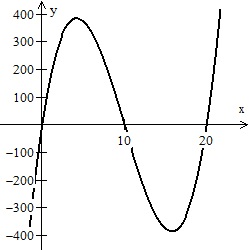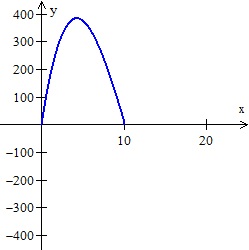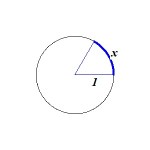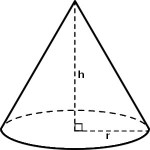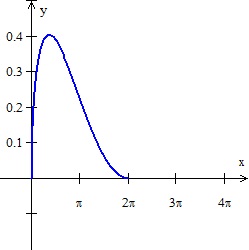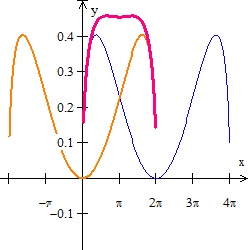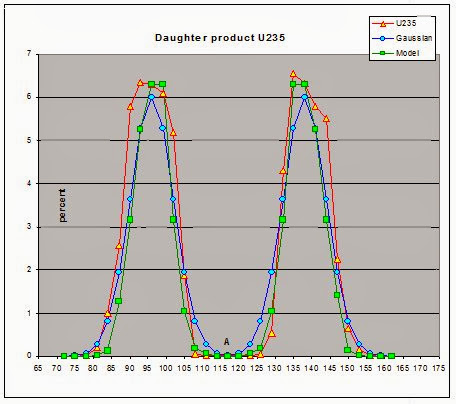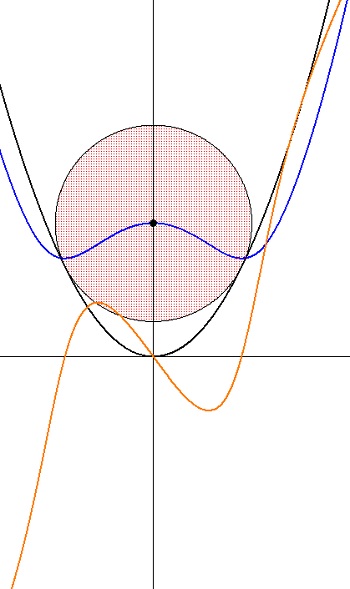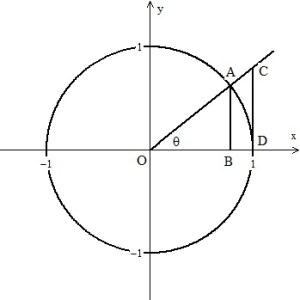We spend a lot of time in calculus studying curves. We look for maximums, minimums, asymptotes, end behavior, and on and on, but what about in “real life”?
For some time, I’ve been trying to find a real situation determined or modeled by a non-trigonometric curve with more than one extreme value. I’ve not been very successful. I knew of only one and discovered a second in writing this post. Here is an example that illustrates what I mean.
Example 1: This is a very common calculus example. Squares are cut from the corners of a cardboard sheet that measures 20 inches by 40 inches. The remaining sides are folded up to make a box. How large should the squares be to make a box of the largest possible volume?
If we let x = the length of the side of the square, then the volume of the box is given by V = x (20 –2 x)(40 – 2x)
The graph of the volume is shown in Figure 1 and sure enough we have a polynomial curve that has two extreme values. But wait. Do we really have two extreme values? The domain of the equation appears to be all real numbers, but in fact it is 0 < x < 10, since x cannot be negative, and if x > 10, then the (20 –2 x) side is negative and that won’t work either. Figure 2 shows the true situation. There is only one extreme value.
- Figure 1
- Figure 2
Example 2: This is also an optimization problem, but a bit more difficult. A sector is cut from a circular paper disk of radius 1. The remaining part of the disk is formed into a cone. How long should the curved part of the sector be so that the cone has the maximum volume? You might want to try this before you read further.
Let x be the length of curved part of the sector See Figure 3.
The radius of the disk becomes the slant height of the cone. The circumference of the disk is and so the circumference of the base of the cone is
and its radius is
. The height, h of the cone is
. See figure 4.
- Figure 3
- Figure 4
The volume of the cone is .
The graph of this equation is shown in Figure 5, and has two maximum values and a minimum. The domain appears to be . But if
the piece you cut out will be larger than the original disk (and the expression under the radical will be negative). So our domain will be
(the endpoints correspond to not cutting any sector or cutting away the entire disk. The graph is shown in Figure 6 with, alas, only one extreme value.
- Figure 5
- Figure 6
(For the original expression the minimums are at and the maximums are at
. A CAS will help with these calculations or just use a graphing calculator.)
- Extension 1: Find the value of x that will make the largest volume when the piece cut out is formed into a cone. Compare the two graphs and explain their congruence. See Figure 7.
- Extension 2: Here I finally found what I was after. – a situation with more than one extreme value. Find the value of x that will make the largest total volume formed when the volume of the original cone and the cone formed by the piece cut out. Compare the first two graphs and the graph of this volume. See figure 8 – the magenta graph.
- Figure 7
- Figure 8
The Mae West Curve
There is at least one real situation that is modeled by a function with several extreme values. Spud’s blog gives the following explanation and illustration.
“When a Uranium (or Plutonium) atom fission, or splits, you end up with two much lighter atoms, called fission products, or daughter nuclides. The U-235 nucleus can split into a myriad of combinations, but some combinations are more likely than others.
“[Figure 9 below] shows the percentage of fission products by [atomic] mass[, A]. [This is] called the Mae West curve. … Note that the more likely fission products have two peaks at a mass of about 95 and 135.”
Thus we have a real life illustration of a model that has three extreme values in its domain.
The model graphed in Figure 9 is known as the “Mae West Curve,” named after Mae West (1893 – 1980) and actress, playwright and screenwriter.
- Figure 9: The “Mae West” Curve
If you know of any other real situations with more than one extreme, please let us know. Use the “comment” button below.
.


